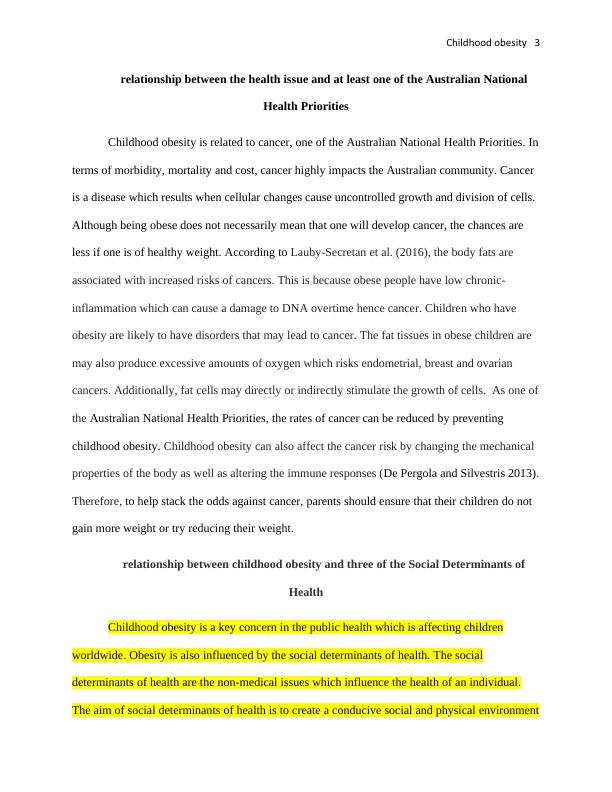Childhood Obesity: Causes, Impacts, and Prevention
Develop an understanding of social determinants of health, propose an evidence-based intervention to address health disparities, and create a health promotion pamphlet.
7 Pages1434 Words20 Views
Added on 2023-01-13
About This Document
Childhood obesity is a condition in which excess body fat impacts the health and wellbeing of a child. This article explores the causes, impacts, and prevention of childhood obesity. It also discusses the relationship between childhood obesity and cancer, social determinants of health, and upstreaming approach to nursing care.
Childhood Obesity: Causes, Impacts, and Prevention
Develop an understanding of social determinants of health, propose an evidence-based intervention to address health disparities, and create a health promotion pamphlet.
Added on 2023-01-13
ShareRelated Documents
End of preview
Want to access all the pages? Upload your documents or become a member.
Childhood Obesity and its Impact on Health and Society
|9
|1838
|21
Childhood Obesity Report 2022
|6
|1708
|17
Childhood Obesity
|5
|1142
|50
Childhood Obesity
|10
|2441
|70
Childhood Obesity: Causes, Consequences and Prevention Strategies
|6
|1570
|206
Main Causes of Obesity (Doc)
|6
|1649
|164



